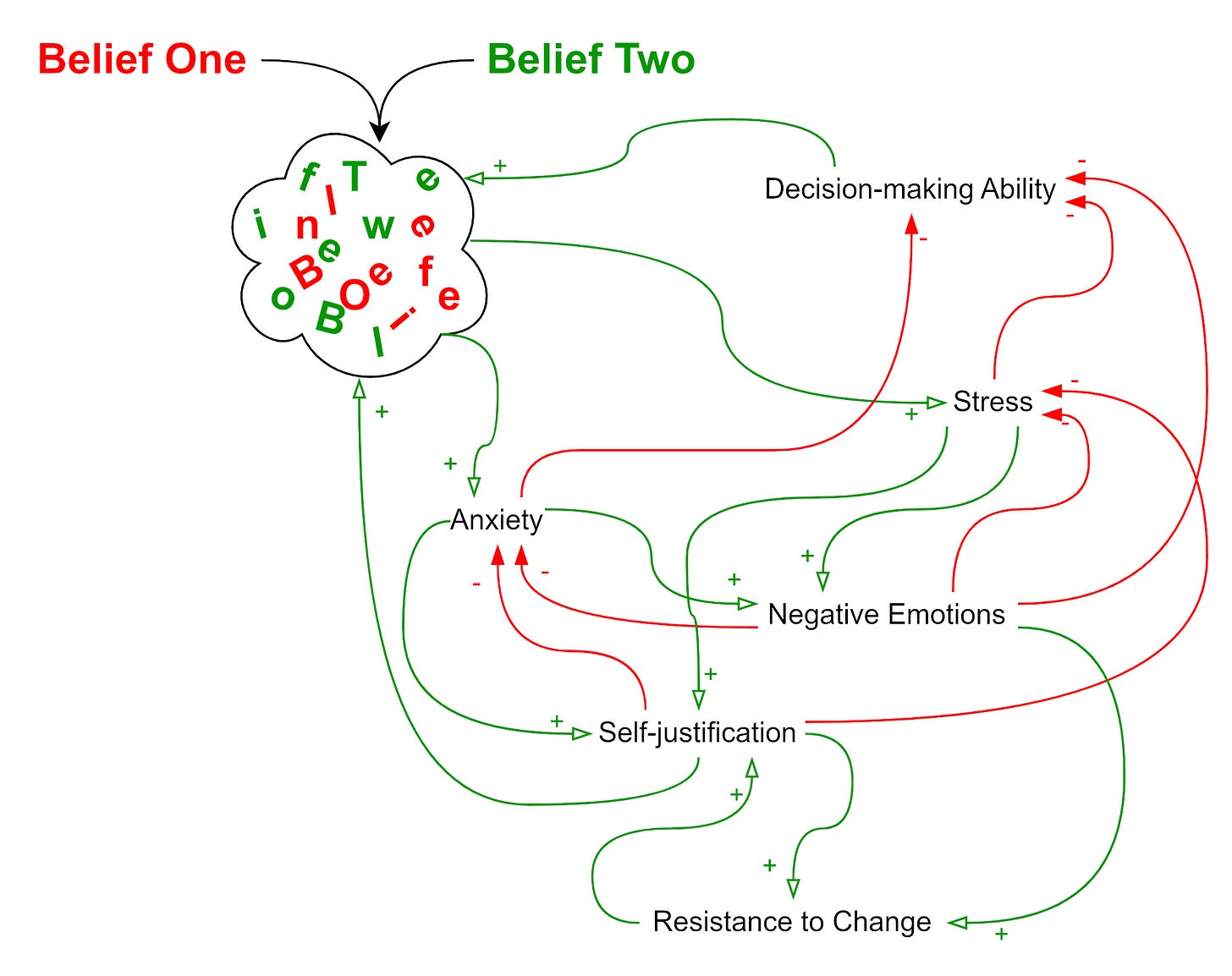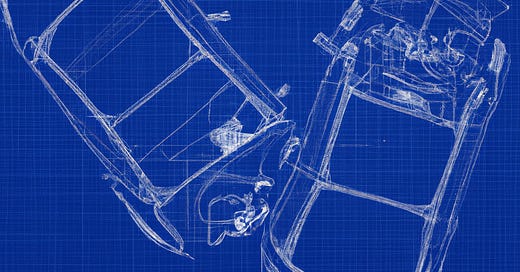
The Agile Mindset - Beginner's Mind, Cognitive Dissonance
This sentence contradicts itself -- no actually it doesn't. - Douglas Hofstadter
(This article is part of an on-going series dedicated to developing Agile mastery. Each post offers value to students on this journey, however, there is an advantage to those who start at the beginning.)
When I was in college, I had an 8x10 picture frame with a single sentence on white paper written in small lettering. It was hung on the wall a few inches above the baseboard. The sentence read: "How can you stand reading this?" Occasionally, it would cause someone to laugh. Mostly, it caused people to respond with "I don't get it. Why's that there?" I took their question to be a reflection of some mild discomfort at not getting the joke.
I'm rounding out this set of cognitive biases with one that isn't a cognitive bias but is closely related: Cognitive dissonance. For the next post in the series, I'll tie the set together and discuss many of the concerted effects they have on our ability to develop an Agile mindset and practice Agile masterfully.
Cognitive dissonance is the psychological stress we feel when our thoughts and actions are out of alignment, the mental discomfort born from holding contradictory beliefs, values, or ideas when they are played out in decisions and behaviors. When the stakes are low, as with my little picture frame, people will ask questions. When the stakes are higher, when our brains are shouting at us to "Go away closer!", we engage in some truly bizarre mental metal bending and overt behaviors in an effort to reconcile the contradictions.
In my view, the psychological discomfort from cognitive dissonance isn't near as intense as it needs to be in many cases, particularly here in the hyper identity-driven and mob enforced 21st century. If I could wave a magic wand and change one thing about the world it would be to install a biochemical mechanism that causes headaches to occur in varying intensity according to the level of cognitive dissonance inside someone's head. A structural engineer, for example, who is adamant that 2+2=5 would experience a debilitating migraine until they either permanently stop working as a structural engineer or reassess their mathematical prowess and see the wisdom and social justice behind two and two adding up to four. (This biochemical mechanism would, of course, be fully suppressed by an evolutionary more advanced biochemical process that allows for dedicated artistic endeavors and truly insightful satire.)
I could go on. No great reach needed to grasp this one is, or rather was, the source of significant frustration throughout my coaching career. But there are two edges to every mental blade we're swinging around inside our little minds. The more I used the discomfort from my own cognitive dissonance as a pointer to my own limiting beliefs and weaknesses, the faster I could focus on resolving the contradictions in a way that better equipped me to function in a chaotic and cruelly indifferent world. More on this a little later. Let's talk first about all the bad juju that falls off a runaway cognitive dissonance crazy train. What better way to do this than with a runaway sentence?
Two contradictory beliefs (or values or ideas) collide in a cloud of chaos which increases feelings of stress and anxiety that increase negative emotions, such as anger or frustration or guilt, and decrease decision-making ability which adds to the chaos while the increased negative emotions increase feelings of stress and anxiety which leads to increased self-justification and greater resistance to change and greater self-justification and then greater resistance to change and etc., etc., etc.
As a causal loop diagram, it looks like this:
Of particular importance is the loop that develops around self-justification and resistance to change. As one increases, so does the other. A vicious cycle. The thing conspiracy theories are made from. These are tough to break within individuals. Even tougher to break if they exist within teams. Often, the best course of action is to break up the team. But that's a story for another day.
It should also be stated that it takes a great deal of energy and intelligence to create and maintain a system like this. Highly intelligent people are often the most susceptible to being captured by such a system. As the say, smart people are the easiest to fool because they are so incredibly adept at fooling themselves.
"We cannot escape a contradiction in ourselves; we must try and resolve it. If the contradiction comes from others, it does not affect us: it is their affair." - Johann Wolfgang von Goethe
What's important for an Agile mindset is developing the skills that keep this system in check. There are no shortcuts. No mental hacks or tricks or simple rules. Like the twenty-year technique in Aikido, working on the skills to counteract the negative influences of cognitive dissonance is a constant never-ending effort.
The short list of skills includes:
A practice of frequently reevaluating your beliefs. Know what you believe by writing out your beliefs on paper so you can better evaluate whether are they are still relevant, accurate, and useful. This evaluation will undoubtedly require additional research and seeking alternative perspectives from trusted advisors.
Map out your rationalizations for any beliefs, values, or ideas you hold. Attach to this map descriptions of any behaviors you perform in order to support the items on the map.
Develop a practice for cognitive restructuring to challenge and modify your beliefs, values, and ideas. By identifying and examining the evidence that supports or contradicts your beliefs, values, and ideas, you'll be in a better position to know how to modify and adapt them to your life.
Meditation and mindfulness practices. This one can be fraught. There's a lot of bullshit in the wind these days on meditation and mindfulness. Finding good teachers and mentors is essential. There are more bad ones than good ones.
This no doubt sounds daunting. That's because it is. But the payoff is very, very big, too. While cognitive dissonance is a negative psychological state, knowing how to respond to it's effects with skill and compassion leads to tremendously positive personal growth. As you become more aware of your beliefs, values, opinions, and ideas and strive to align your behaviors with them, you will become much more resilient - antifragile, even - and capable. Along the way you will have developed bullet-proof critical and system thinking skills, not to mention the pure joy that comes from a robust intellectual curiosity. Increased confidence will come along with the ride. Unlike many of the people with whom you work, you will have a highly capable mental system for knowing when to seek new information and alternative perspectives - not because you have to, but because you want to.
If you have any questions, need anything clarified, or have something else on your mind, please use the comments section or email me directly.
← The Agile Mindset - Beginner's Mind, Egocentric Bias
The Agile Mindset - The Tangled Web We Weave →
Photo by Uriel Soberanes on Unsplash











